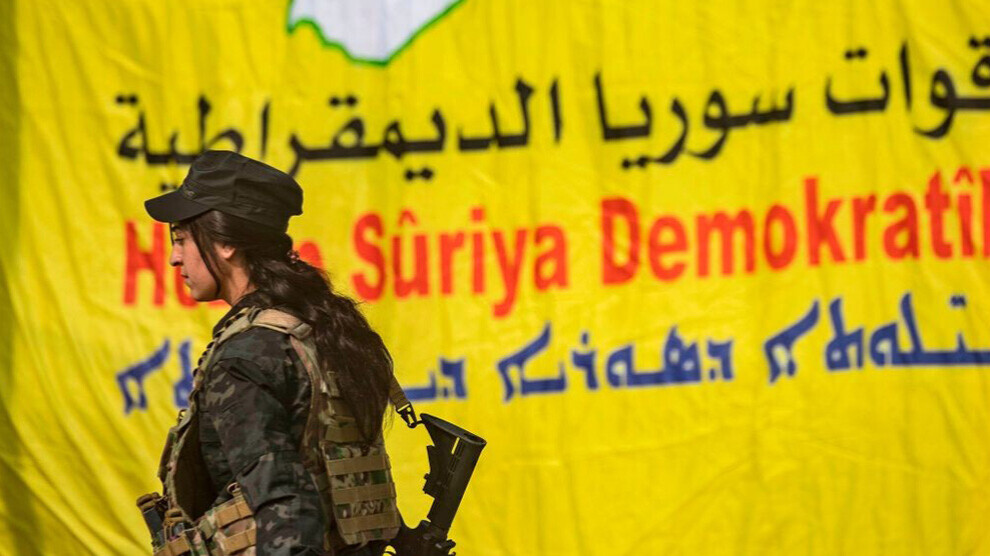SDF discover ISIS tunnel in Dashisha
SDF discovered a tunnel created by ISIS in Dashisha. For the third day in a row, a retaliation operation is underway in the region south of Hesekê for two women executed by jihadists.
SDF discovered a tunnel created by ISIS in Dashisha. For the third day in a row, a retaliation operation is underway in the region south of Hesekê for two women executed by jihadists.

A tunnel excavated by ISIS has been found in the northeastern Syrian town of Al-Dashisha. The Syrian Democratic Forces (SDF) recently made the discovery in the course of the retaliatory operation against the terrorist militia's extremists that has been ongoing in the region since Thursday. How long the tunnel is and where it leads to is still under investigation. In many places in Syria and Iraq, ISIS terrorists have excavated extensive tunnel systems under their rule. These served not only as protection from air strikes by the international anti- ISIS coalition, but also as shelter.
Meanwhile, according to SDF circles, more people attributed to ISIS were arrested during the operation. While there is talk of several dozen, their exact number is to be announced in the coming days. In addition to regular SDF members, the People's and Women's Defense Units (YPG/YPJ) and the Asayish (Internal Security Forces) are also participating in the large-scale operation. This is a retaliation offensive for Sada al-Harmoush and Hind al-Khedr. The two Arab local politicians worked for the autonomous administration and were abducted and executed by ISIS mercenaries in al-Dashisha a good two weeks ago.
ISIS reorganizes
ISIS remains very active in Syria and Iraq. The terrorist organization overran large parts of Iraq and Syria in the summer of 2014 and brought them under its control. Across state borders, its leader Abu Bakr al-Baghdadi, who was killed in October 2019, proclaimed a caliphate - with himself at its head. Countless people were murdered in bestial ways, with some 10,000 falling victim to the genocide in the Yazidi settlement area of Shengal (Sinjar) alone. Iraq prematurely declared victory over ISIS at the end of 2017, and in neighboring Syria the militia's territorial rule was ended in spring 2019.
Even though thousands of ISIS jihadists have been arrested since then, underground structures formed in Iraq and Syria. In regions such as Deir ez-Zor, Raqqa, and Hama in Syria and Kirkuk, Baghdad, and Anbar in Iraq, these networks continue to carry out attacks. The frequency and quality of these attacks has increased significantly in recent weeks.